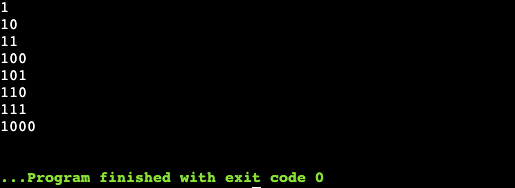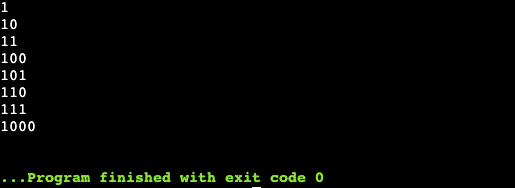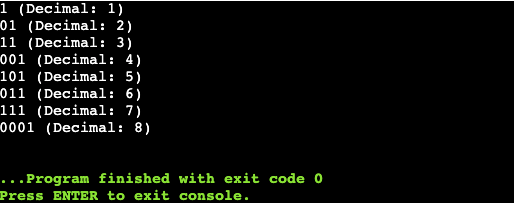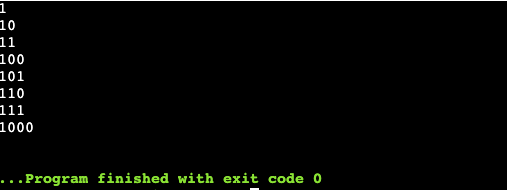DS Tutorial
DS Array
DS Linked List
DS Stack
DS Queue
DS Tree
DS Graph
DS Searching
DS Sorting
Differences
Misc
DS MCQ
An Interesting Method to Generate Binary Numbers from 1 to nIntroductionBinary numbers are a combination of 0s and 1s. They form the foundation of all digital computations and are used in programming, data storage, and communication systems. Generating binary numbers from 1 to n is a common task in various applications, and several methods exist to accomplish this. This article will use methods like Loop or Recursive functions and bit Manipulation methods to generate binary numbers from 1 to n. Using a Loop or Recursive function
Using Loop(Java Code)Output: 
Note: - Change this value to generate binary numbers up to nUsing a Recursive Function(Java Code)Output: 
Bit Manipulation MethodAlgorithmInput: n (the upper limit for generating binary numbers)
Implementation in JavaOutput: 
Using the QueueAlgorithmInput: n
Implementation in JavaOutput: 
ConclusionGenerating binary numbers from 1 to n is common in computer science and digital technology. The method involves converting each decimal number to binary individually; by utilizing bit manipulation, we can generate binary numbers from 1 to n with minimal memory usage and improved performance.
Next TopicBottom View of a Binary Tree
|
 For Videos Join Our Youtube Channel: Join Now
For Videos Join Our Youtube Channel: Join Now
Feedback
- Send your Feedback to [email protected]
Help Others, Please Share









